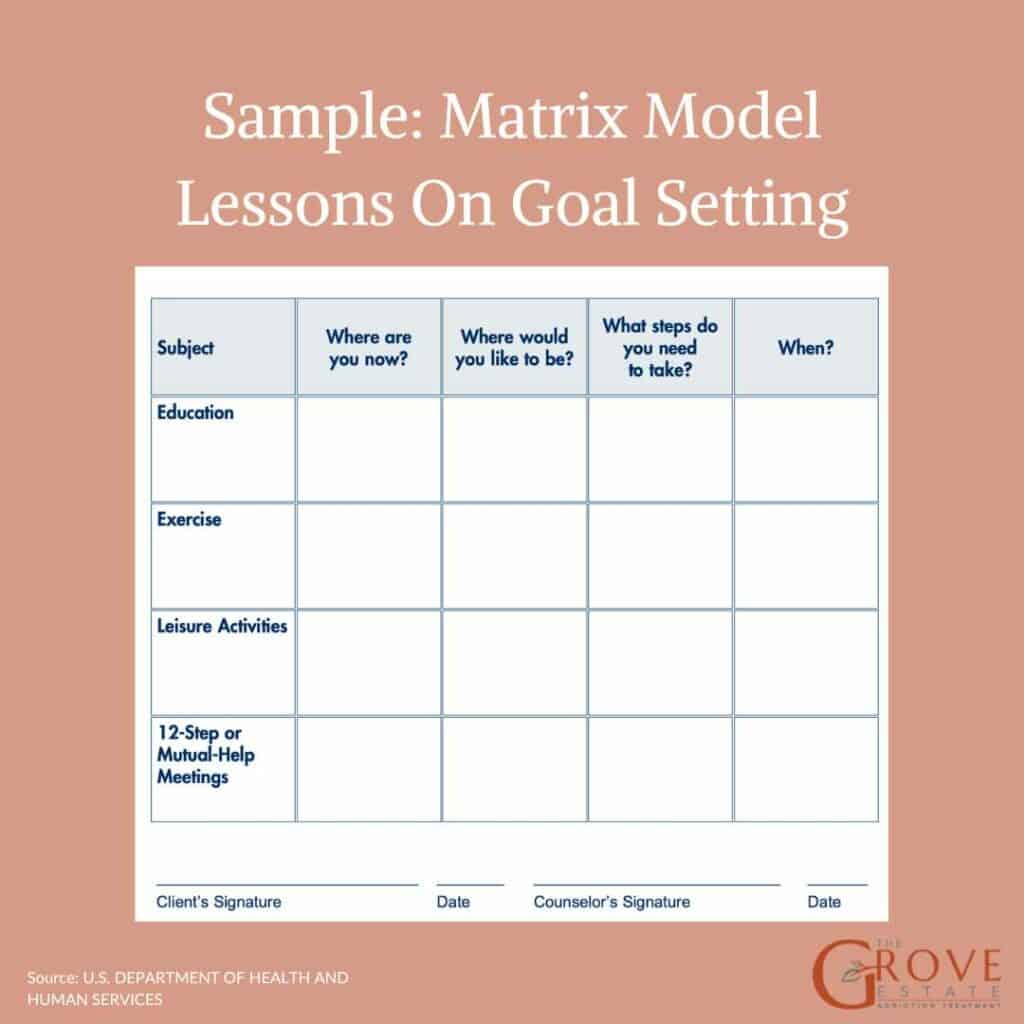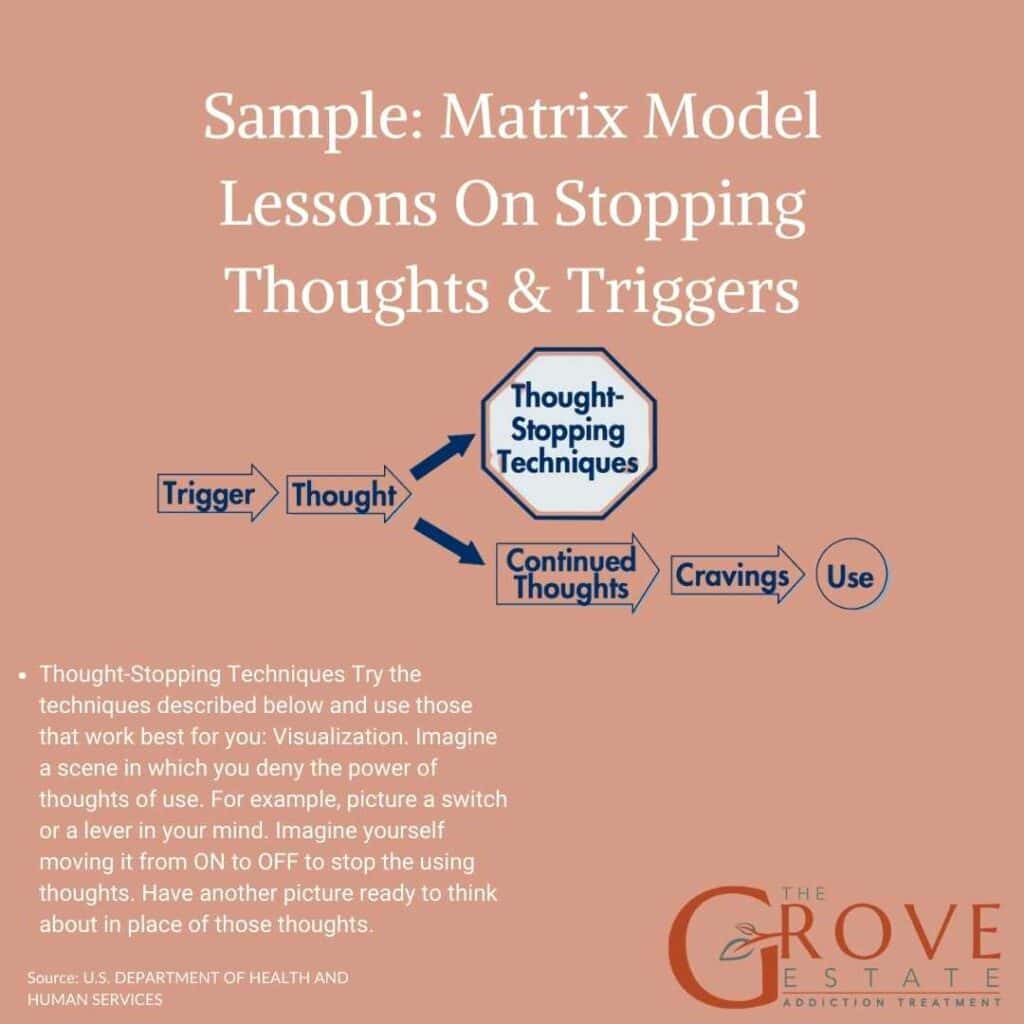The matrix model is one of the earliest outpatient addiction treatments out there. It was introduced in the 1980s in Southern California during the cocaine epidemic.
Since then, the model has helped many patients break free from their addictions, quitting completely on cocaine, methamphetamine, and other similar substances.
In this post, we’ll explore this rehab approach in detail. We’ll discuss what it is, the elements that make it, and how effective it is.
What Is the Matrix Model?
The matrix model is a 16-week intensive outpatient addiction treatment model that was developed to help individuals that require an intensive therapy model while also allowing patients to come to the rehab for treatment and leave for home each day.
The Matrix Model incorporates several therapeutic styles and psychological orientations, such as:
- Individual counseling
- Group therapy
- Family education
- Cognitive-behavioral therapy (CBT)
- Contingency management
These components collectively form an all-embracing and cohesive framework that addresses various aspects of addiction (more details below).
A research paper by Rawson RA et al titled “An intensive outpatient approach for cocaine abuse treatment. The Matrix model” supports the use of the matrix model and speaks for its effectiveness in treating stimulant addiction on an outpatient basis. Its authenticity is further reflected by The National Institute on Drug Abuse and The National Institute on Alcohol Abuse and Alcoholism, which have authorized and recognized this therapy model for drug addictions and alcoholism.

What Are Matrix Model’s Elements?
The Matrix Model, an integrated treatment approach, combines cognitive behavioral therapy, contingency management, relapse prevention, and motivational interviewing with family involvement, psychosocial education, 12-step support, and urine testing are all integrated into the treatment protocol, according to the Center for Substance Use Treatments report on the Strengths and Challenges of the Matrix ModelIt focuses on early recovery skills, offering a mix of group and individual support sessions for participants.
1) What Does Individual Counseling Entail?
Individual counseling involves one-on-one sessions with a trained counselor, focusing on a tailored journey for the patient that emphasizes self-discovery and building resilience.
The counselor sits with the patient to identify the root cause of addiction and teaches them coping mechanisms and recovery strategies. Patients also enhance self-control, realize triggers, and set goals.
The number of sessions may vary from three to 10 depending on the individual’s unique requirements.
2) How Does Group Therapy Support Recovery?
Group therapy utilizes the collective power of shared experiences. It helps:
- Create a supportive community
- Eliminate isolation
- Instill a sense of belonging and understanding
Group dynamics also offer diverse perspectives, accountability, and interpersonal connections, so patients do not give up easily.
3) Why Is Family Education Crucial?
Family education involves educating the patient’s family members about addiction, treatment strategies, and effective communication. The goal is to transform family members into informed allies. This not only strengthens the support system for the patient but also breaks down stigma. It also fuels an encouraging home environment and ensures sustained addiction recovery.
4) What Role Does CBT Play?
CBT targets the link between thoughts, emotions, and behaviors. It identifies and alters negative thought patterns and enables a positive behavior change as a result.
Therapists assess, set goals, and intervene using techniques like guided discovery, Socratic questioning, and role-playing. They may also give homework assignments to reinforce skills and progress is regularly monitored for adjustments.

5) How Does Motivational Interviewing Work?
Motivational interviewing relies on identifying and mobilizing the individual’s intrinsic values and goals to stimulate behavior change. This client-centered approach enhances commitment to change for the patient and promotes autonomy and self-efficacy that’s crucial for sustained recovery.
6) What Are Relapse Prevention Strategies?

A relapse prevention strategy is a proactive plan designed to anticipate, identify, and manage factors and triggers that may lead to a return to substance abuse use.
In the matrix model, cognitive relapse prevention strategies are used. There’s a 90-minute session at the beginning of each week, where other struggling individuals and experts discuss topics like shame, guilt, and resentment. They also collectively figure out effective uses of time, triggers of relapse, and sources of motivation.
How to Begin Treatment?
When struggling individuals register for rehab via the matrix model, they first undergo a thorough evaluation where the provider extracts information to develop a personalized program for them. After this, here’s what it goes like:
- Withdrawal (Day 1-15): This initial phase involves the physical and emotional challenges of detoxification. Individuals may experience withdrawal symptoms as their bodies adjust to the absence of substances.
- Early Abstinence (Day 16-45): During this period, individuals continue adjusting to life without substances. Emphasis is on building coping mechanisms, establishing routines, and navigating the early stages of sobriety.
- The Wall (Day 46-120): This phase often presents significant challenges. Individuals may encounter emotional and psychological barriers, which require strong resilience and therapeutic support to overcome.
- Readjustment (Day 121-End): In this final phase, the focus is to reflect back on progress and work on sustained recovery. The strategies learned earlier are reinforced and patients work towards readjusting to a substance-free lifestyle in the long term.
How to Access Matrix Model Programs?
To access the matrix model program, you first have to find an accredited treatment center that offers matrix model services. We recommend using online directories or consulting with healthcare professionals for recommendations.
Once you’ve found the best rehab center for your needs, verify their matrix model program’s adherence to evidence-based practices and staff qualifications. Also, contact the facility for enrollment information and evaluate their tailored approach to addiction recovery.
Engaging in this proactive research and communication ensures a well-informed and deliberate entry into the matrix model program for effective and personalized treatment.
FAQs
What Makes the Matrix Model Different?
The matrix model stands out due to its comprehensive blend of individual counseling, group therapy, family education, and CBT. It is a multi-faceted and evidence-based approach to addiction recovery.
Who Can Benefit from the Matrix Model?
Most individuals struggling with substance use disorders (stimulants in particulr) can benefit from the matrix model.
How Long Does the Matrix Model Program Last?
The matrix model program typically lasts 16 weeks. But in some cases, it may extend up to 36 weeks or even a year.
What are the downsides to a matrix model program?
The challenges with the matrix model according to The SAMSHA Treatment Improvement Protocol guide are listed below:
- The program requires special staff training and supervision.
- The highly structured content may not appeal to all clients.
- The tight structure and schedule may not leave time for the identification and stabilization of other non-drug-specific problems.
- Some materials may need to be modified for clients whose cognitive functioning is impaired.
Are there PDF downloads
For PDF Downloads of the full matrix model worksheet click here.

Share This Post



